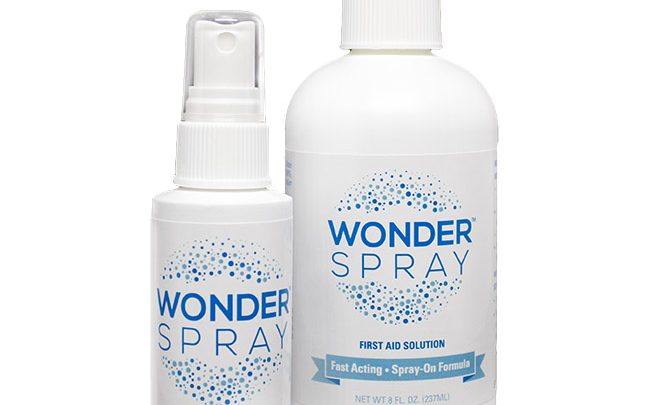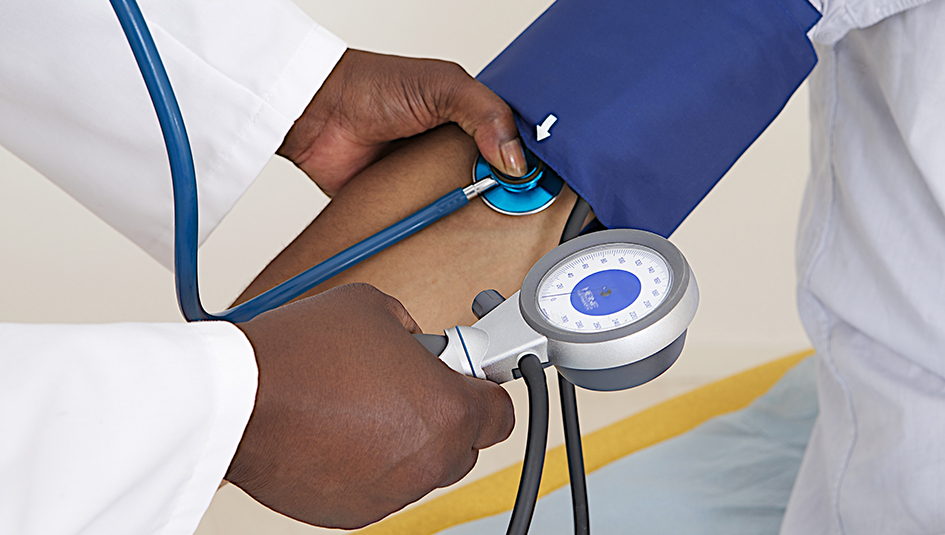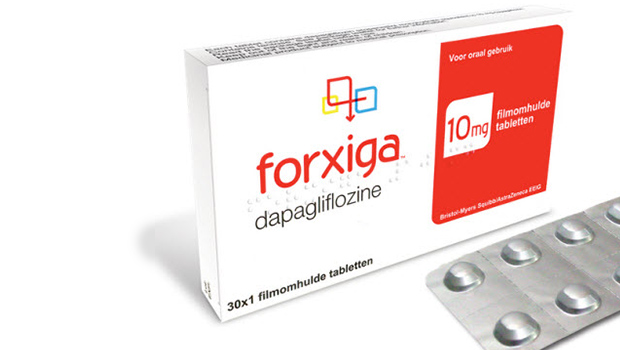Wonder Spray for Diabetes Wound Care
Natural remedy mimics the action of white blood cells to speed healing and reduce inflammation of the surrounding tissues

Diabetes makes you vulnerable to wounds because your skin becomes brittle and your pain awareness diminishes with neuropathy. See High Blood Sugars & Your Skin.
Sometimes you don’t even know that you have hurt yourself and little things you didn’t notice before can become lingering wounds. See Keeping Foot Ulcers out of your Future.
Wound healing is an ongoing problem for everyone with diabetes.
Wonder Spray — https://thewonderspray.com/ — was initially developed as a natural remedy for wound healing but has also been shown to be effective for acne and eczema care for people with sensitive and problematic skin.
Potent Natural Remedy
Wonder Spray’s main ingredient, hypochlorous acid (HOCL), has been described as ‘an ideal wound care agent’ because it kills pathogens on contact.
‘All microorganisms were killed within seconds.’
HydrOxyChloride (HOCL) is what our white blood cells produce and use to combat pathogens.
“The antimicrobial activity of HOCL is not that of a conventional antibiotic but rather an agent that is directly toxic to microbial cells.”
HOCL is an oxidizer and destroys bacteria, yeasts, fungus, mold, and viruses, yet is safe and ideal for wound and skin management.
Once pathogens are vanquished, the body can heal the wound using its own natural timetable, quickly and cleanly.
‘HOCL first came to the attention of doctors and medical researchers as a result of its amazing wound-healing benefits. As far back as World War I, there were stories about the life-and-limb-saving properties of HOCL. The 1983 Bunyan study chronicled the use of HOCL in military hospitals, in which HOCL solutions were used to heal wounds and burns.’
Wonder Spray is also good for soothing minor skin irritations, managing minor burns, wounds, and cuts, plus it calms rashes and minor irritations caused by poison plant saps or insect bites and stings.
The Science behind Wonder Spray
HOCL not only kills bacteria but also viruses, which are impervious to antibiotics and has proven to be a compelling alternative in combating antibiotic-resistant “superbugs” such as MRSA.
- The 2016 Gray, Foster study of a burn unit found the use of HOCL resulted in “a significant decrease in total MRSA infections.”
- The 2011 Mahamat, Brooker study showed that MRSA declined dramatically at a Scottish hospital when HOCL was used to disinfect high-risk areas.
Yet as powerful as HOCL is, its non-toxicity allows wounds to heal naturally, without aggravating the surrounding skin. By working with the body as it heals, HOCL also helps reduce the likelihood that a scar will form.
Sources
Wound Healing
- Armstrong, Bohn et al. (2015). “Expert Recommendations for the Use of Hypochlorous Solution: Science and Clinical Application.” Ostomy Wound Manage 61(5): S2-s19.
“In the last 15 years, more advanced hypochlorous acid (HOCl) solutions, based on electrochemistry, have emerged as safe and viable wound-cleansing agents and infection treatment adjunct therapies. Based on in vitro studies, the antimicrobial activity of HOCl appears to be comparable to other antiseptics but without cytotoxicity; there is more clinical evidence about its safety and effectiveness. With regard to the resolution of infection and improvement in wound healing by adjunct HOCl use, strong evidence was found for use in diabetic foot wounds; moderate evidence for use in septic surgical wounds; low evidence for venous leg ulcers, wounds of mixed etiology, or chronic wounds; and no evidence for burn wounds. The panel recommended HOCl should be used in addition to tissue management, infection, moisture imbalance, edge of the wound (the TIME algorithm) and aggressive debridement. The panel also recommended intralesional use of HOCl or other methods that ensure the wound is covered with the solution for 15 minutes after debridement.”
- Sakarya, Gunay et al. (2014). “Hypochlorous Acid: an ideal wound care agent with powerful microbicidal, antibiofilm, and wound healing potency.” Wounds 26(12): 342-350.
“The aim of this study was to investigate the effect of stabilized hypochlorous acid solution (HOCl) on killing rate, biofilm formation, antimicrobial activity within biofilm against frequently isolated microorganisms and migration rate of wounded fibroblasts and keratinocytes. Minimal bactericidal concentration of stabilized HOCl solution for all standard microorganisms was 1/64 dilution. All microorganisms were killed within 0 minutes and accurate killing time was 12 seconds. The stabilized HOCl solution had dose-dependent favorable effects on fibroblast and keratinocyte migration compared to povidone-iodine and media alone. These features lead to a stabilized HOCl solution as an ideal wound care agent.”
- Totoraitis, Cohen et al. (2017). “Topical Approaches to Improve Surgical Outcomes and Wound Healing: A Review of Efficacy and Safety.” J Drugs Dermatol 16(3): 209-212.
“Surgical procedures are an important piece of a dermatologist’s daily practice. Therefore, the optimization of post-surgical wound healing is an area of utmost importance and interest. In an attempt to mitigate this risk and improve surgical outcomes, multiple topical products continue to be used. Traditionally, this includes both topical antibiotics and antiseptics. Topical antiseptics, including chlorhexidine and povidone-iodine, can have a cytotoxic effect on keratinocytes and may actually impede wound healing as a result. In addition, chlorhexidine, in particular, can produce both otologic and ocular toxic effects when used on the face. Emerging products, such as hypochlorous acid, may be a potential alternative to the more commonly used agents, as it has effective antimicrobial actions and minimal adverse effects.”
Venous Leg Ulcers
- Bongiovanni (2014). “Effects of Hypochlorous Acid Solutions on Venous Leg Ulcers (VLU): Experience With 1249 VLUs in 897 Patients.” J Am Coll Clin Wound Spec 6(3): 32-37.
“897 patients with 1249 venous leg ulcers were treated with aqueous solutions of hypochlorous acid (HCA) rather than the standard normal saline. This protocol caused all ulcers to close completely. Venous leg ulcer care protocols that clean, debride, pack and dress with hypochlorous acid solutions can reduce the effects of some comorbidities while accelerating healing times.”
- Selkon, Cherry et al. (2006). “Evaluation of hypochlorous acid washes in the treatment of chronic venous leg ulcers.” J Wound Care 15(1): 33-37.
“Patients who failed to achieve a 44% reduction in wound size with standard treatment (compression bandaging) received HOCl washes. Of the 20 ulcers, nine (45%) healed and five (25%) reduced in size by over 60%, when treated with HOCL. All patients became free of pain. These findings confirm the clinical efficacy of treating venous leg ulcers with hypochlorous washes. Use of HOCl washes as an adjunctive therapy for recalcitrant venous leg ulcers appreciably increases healing and rapidly relieves pain.”
- Strohal, Mittlbock et al. (2018). “The Management of Critically Colonized and Locally Infected Leg Ulcers with an Acid-Oxidizing Solution: A Pilot Study.” Adv Skin Wound Care 31(4): 163-171.
“The study authors tested a new acid-oxidizing solution (AOS [Nexodyn]; APR Applied Pharma Research S.A., Balerna, Switzerland) to determine its ancillary antimicrobial properties and potential support for wound healing. In the study, 30 patients with critically colonized or locally infected chronic leg ulcers of any origin were included. Application of the solution was well tolerated, and no adverse events were recorded. In all patients, local infection was overcome, and wound bed pH and wound area decreased significantly. In addition, patient pain levels decreased to a level where interventions were not required after study day 7. In 37% of all patients, a complete resolution of chronic ulcers was achieved by the end of the study period. According to these results, the AOS seems to be a valid and highly tolerable treatment to support wound healing in locally infected ulcers.”





